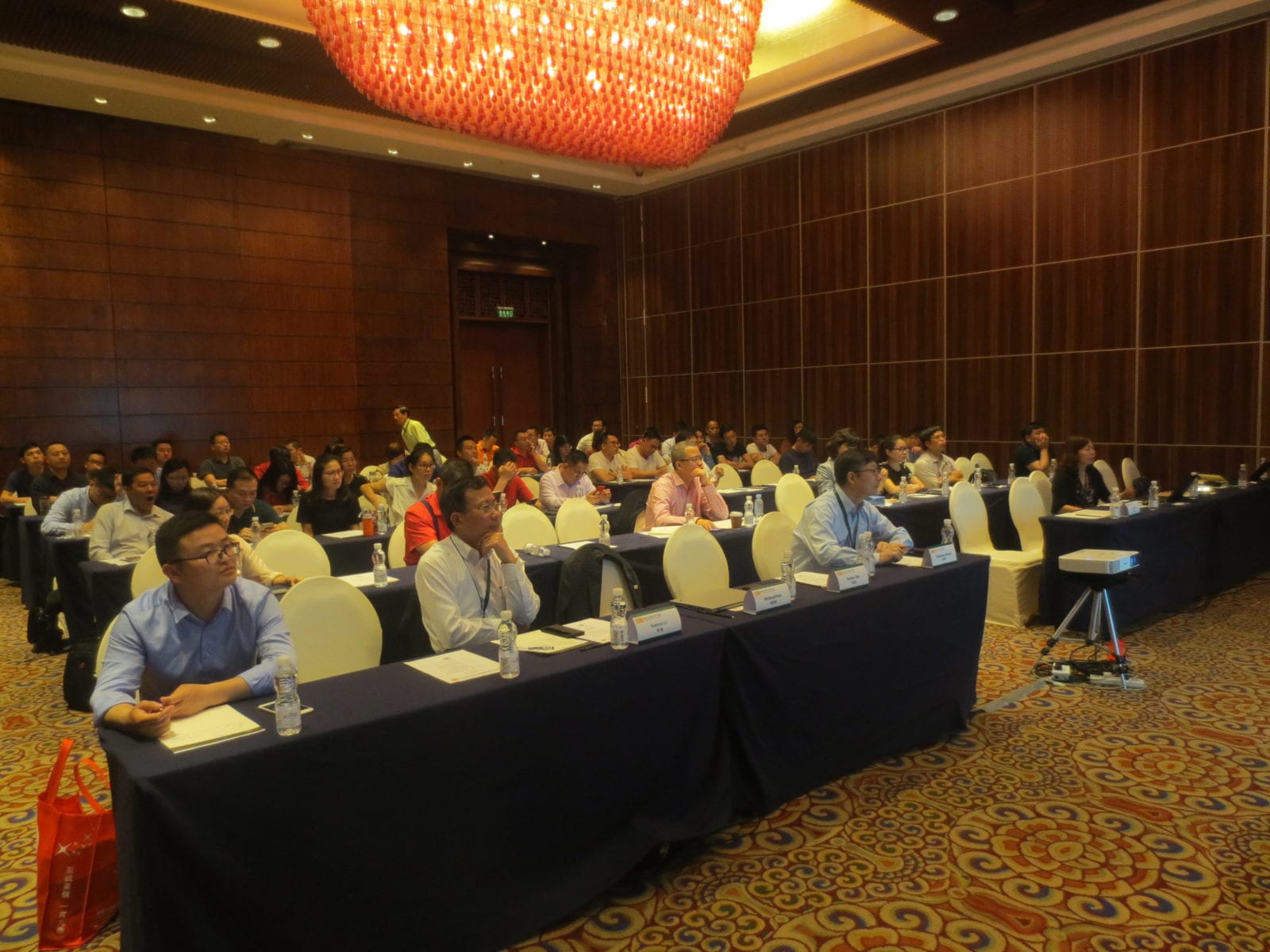Chinese Customers Participate in USSEC’s 2019 Market and Technology Seminar in Nanning
- Category:
- Animal Utilization
- General News

On April 19, USSEC China successfully held a market and technology seminar in Nanning, Guangxi Province. 60 people representing crushers, feed millers, and animal husbandry corporations participated in this seminar.
Mr. Kuiyou Yan, Project Director of China Feed Industry Association, delivered a detailed analysis of the current China feed industry. China’s 2018 feed production reached 227 million metric tons (MMT), 2.8 percent growth year over year. Compound feed production reached 205 MMT, 4.6 percent growth year over year. Concentrated feed production reaches 16 MMT, 13.4 percent decrease year over year. Premix feed production reaches 6 MMT, 5.1 percent decrease year over year.
In 2018, China’s swine feed production reached 97 MMT, 0.9 percent decrease year over year. Layer poultry feed reached 29 MMT, 1.8 percent growth year over year. Broiler poultry feed reached 65 MMT, 8.2 percent growth year over year. Aquafeed reached 22 MMT, 6.3 percent growth year over year. Ruminant feed reached 10 MMT, 8.9 percent growth year over year.
In 2019, China’s pork price will keep growing. Big animal husbandry companies are still growing and merging with other small companies. China PSY has reached 16 to 18.5, better than the former 14. However, this is still a huge difference as overseas’ PSY is 26 to 28. China’s poultry consumption will keep rising.
Dr. Richard Han, USSEC China - Animal Utilization Director, emphasized “the necessity of quality soybean meal for low protein diets” in his speech. “Low protein diet doesn’t mean low soybean meal diet. Cost-performance ratio of soybean meal versus other protein meal is the major element. A low protein diet will increase the animal’s feed consumption and daily weight increase. Too low protein diet (baby pig feed less than 15 percent, growing pig less than 14 percent, and finishing pig less than 13 percent) could raise feed cost, and has a tendency to lower growing performance and pig quality.”
Dr. Sam Shi, USSEC technical consultant, shared his experience regarding full fat soybean. “The advantage of full fat soybean: higher protein and oil, less water; higher feeding consumption with higher daily weight increase; anti-nutrition factor was mainly destroyed; nutrition digest rate more than 90 percent. Full fat soybean’s price is RMB 3500/metric ton (MT), while fish meal’s price is RMB 12500/MT. Full fat soybean’s price is just one-third of fish meal. U.S. Soy has lower fiber rate, higher sucrose, higher linoleic acid, higher mineral element, higher essential amino acid, and is more suitable for extrusion.”
Xiaoping Zhang, USSEC Regional Director – Greater China, delivered a speech giving a U.S. soy market update and the U.S. Soy Sustainability Assurance Protocol (SSAP). The legal system, best management practice, independent third party audit, and benefits of the soy chain industry for U.S. soybean sustainability impressed the audience.
Mr. Li Qiang, JCI Chairman, delivered a speech about basis trading strategy and case study under China soybean meal options. “Basis occupied 5 to 10 percent of total price. After options on board, basis’s influence to price has been strongly weakened. Some crushers have begun to use dual pricing trade (CBOT basis+DCE option) to realize low risk profit,” he said.
This is the first time that USSEC has held this type of seminar outside of Beijing or Shanghai. The event provided a good opportunity for Nanning and nearby crushers, feed millers, pig farmers to participate in our seminar.


